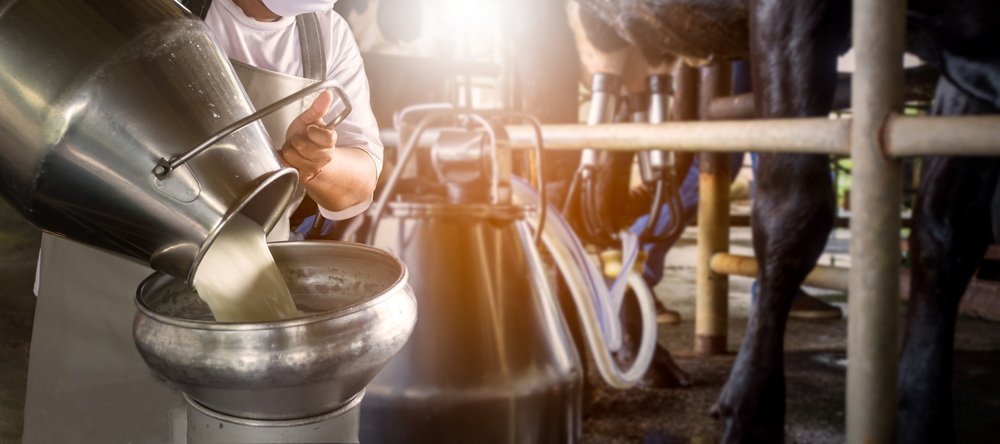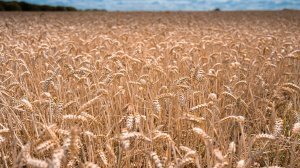Roman Bondarev, COO of LLC "Russian Land," shared insights on how to optimize agricultural enterprise workflows to factory-level precision and boost productivity.
The "Berezovskoye" farm focuses on two main activities: crop farming and animal husbandry. Commercial crops for sale and feed for livestock are grown. The company manages 5,800 hectares of arable land. The animal husbandry includes breeding dairy cattle of the Black-and-White Holstein breed, as well as sheep for meat production. The farm ranks second in the Saratov region for milk productivity per forage cow, achieving an average of up to 8,000 kilograms of milk per year in recent years.
Vladimir Grishanov, the director of LLC "Berezovskoye," shared how the farm achieved such results and how digitalization played a role.
Implementing Digital Solutions: How It Affected Productivity and Efficiency
I have known "AgroSignal" for quite a long time, and our collaboration started in the early 2000s. Before joining "Berezovskoye," I used the company's products in my previous job and was aware of the capabilities of this service. So, in 2015, when I joined "Berezovskoye," relying on my prior experience, I had no questions about which digital solution to use. The farm had previously worked with another contractor providing limited capabilities—production tracking and fuel control. Naturally, that was unsatisfactory, and we implemented "AgroSignal," which gave us the most complete picture of the farm's production processes.
The goal of the digital solution is not limited to monitoring agricultural machinery. Those who think the service is only for this purpose are greatly mistaken: it can be compared to a Swiss army knife for farm management. The solution includes many parameters, such as field history, actual dates of completed operations, pesticide use, yield, and many other accumulated data points that need to be used in planning work and calculating optimal costs. The more of this data we have, the more accurate the analysis and planning. Thanks to this, we work according to the created plan. In case of changes in weather or other factors, we can respond quickly to the information received, monitoring all fields simultaneously and taking corrective measures as needed.
The wages of mechanics and drivers are calculated based on the work done, with the quality of work monitored by indirect parameters. These are just some of the useful functions the service provides. Equipment monitoring, including fuel control, is also important. The farm staff has already become accustomed to daily control, and although there were cases of theft in the past, they are now almost nonexistent. The control function still exists, but in 2022, we did not find any instances of fuel theft.
In animal husbandry, we monitor not only the delivery of feed but also the feeding time, the balance of feeding rations, feed leftovers, and their consumption. To achieve maximum milk yield, it is essential to follow technology and precision in every detail. To achieve high results, cows must be fed at strictly defined times, down to the minute. The animal's body becomes accustomed to this schedule and produces the necessary digestive enzymes at the right time. Moreover, milking must also take place at a specific time when the cow is ready to give the maximum amount of milk, and any deviation can result in reduced productivity. Daily control of feeding and milking is of utmost importance.
Equipped the weighing mechanisms with sensors, optimized feeding, and increased milk yield
To adhere to the technological process and achieve record milk yields, every detail matters. The rations for each group of cattle must be individual and depend on gender, age, and lactation period. The feed ration consists of many components (silage, haylage, straw, hay, concentrates, premixes) that must be weighed and loaded in specific proportions. To understand: if we do not follow the proportions and fail to add the necessary components, there will be productivity issues. If we, on the other hand, break the feed proportions, it will negatively affect the animal’s health over time, and even more so—the economy. This is due to feed wastage, which is expensive. For example, in the structure of dairy farming costs, feed accounts for about 50%, and for meat production, up to 60%. Therefore, any violations of feed proportions significantly reduce the economic indicators of livestock farming. To minimize risks, we implemented "AgroSignal" in animal husbandry. The deployment and adaptation took about a year.
Now, the automated system reads data from the feed distributor’s weighing mechanism and transfers it to the computer, allowing us to track daily expenses, feed leftovers, and other costs. This allows us to plan and control the farm's economy more accurately and strictly follow the feeding schedule and times for the animals.
Control of deadlines and work quality: the benefits of using the digital platform
The main achievement from using "AgroSignal" is the timely data acquisition. We now have the ability to control deadlines and the quality of completed work. Overall, it makes farm management much easier. For example, some tasks that previously required physical labor and presence were optimized. Before, the accountant would go out to the fields, measure productivity with a "sazen" (a unit of measure), which took a huge amount of time and effort. After implementing the digital platform, we can monitor all the fields where work is being done. The accountant is still needed, but now they receive all the data in real-time, monitor the progress of work on all fields, keep track, but do it remotely, and when necessary, provide specialists with the information needed to make timely decisions.
Thanks to digitalization, labor costs and resources, including fuel, pesticides, and seeds, are reduced, while output and productivity increase. All of this significantly affects the farm's performance and cost savings. In addition to savings, digitalizing experience gives us the opportunity for planning. In agriculture, climate conditions are cyclical, and if the data archive is processed correctly, it will be possible to predict the impact of the climate on the planned yield with some probability. For example, in favorable climatic conditions, higher investments are required to achieve a greater return. However, in unfavorable conditions, it’s not worth investing heavily in fertilizers, pesticides, or other expenses, as they may prove ineffective and lead to negative results.
The Golden Middle in Animal Husbandry: How to Find the Balance Between Milk Yield and Profitability
Our main goal is to achieve profitability in milk production. In animal husbandry, profitability is usually low, so many are reluctant to engage in this business. However, in 2022, we achieved a profitability rate of 25% in milk production, which is considered a good result. We control costs, profits, and profitability through the digitalization of this process.
For our Black-and-White breed cows, it is believed that the potential milk yield should be 7,400 kg. We reached 8,000 kg, but that doesn’t mean we should continue increasing milk yield without considering economic factors. It’s not a fact that increasing the yield to 9,000 kg will lead to higher profitability and profits. It is necessary to find the golden middle, where profitability is highest.
There are many other factors, such as increasing the intensity of cow usage, which could lead to a shorter lifespan. Moreover, increasing milk yield requires higher feed costs, and all of this needs to be considered and balanced.
Implementing digital services allows us to address all the aforementioned issues to achieve the planned production targets.



